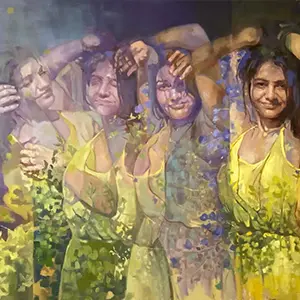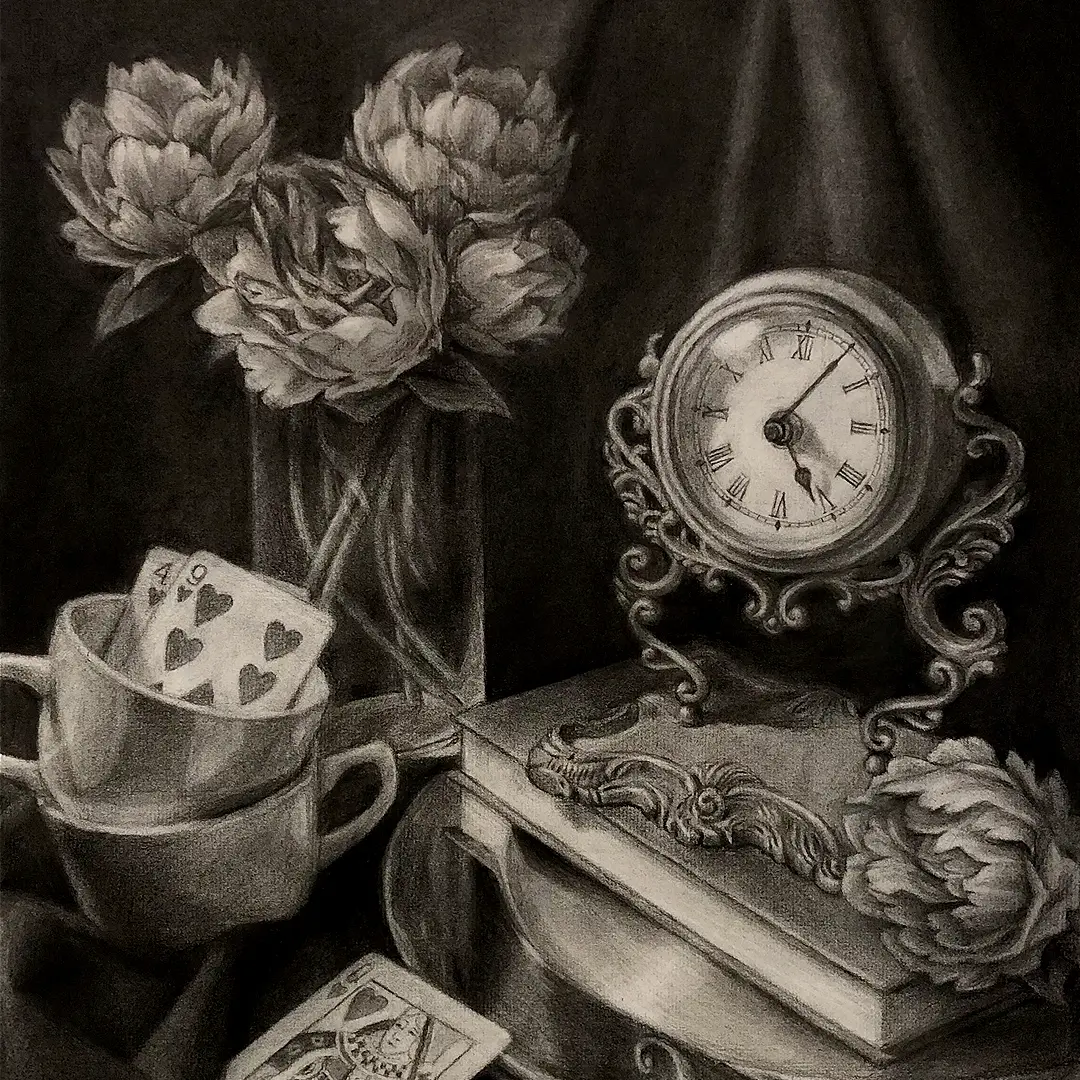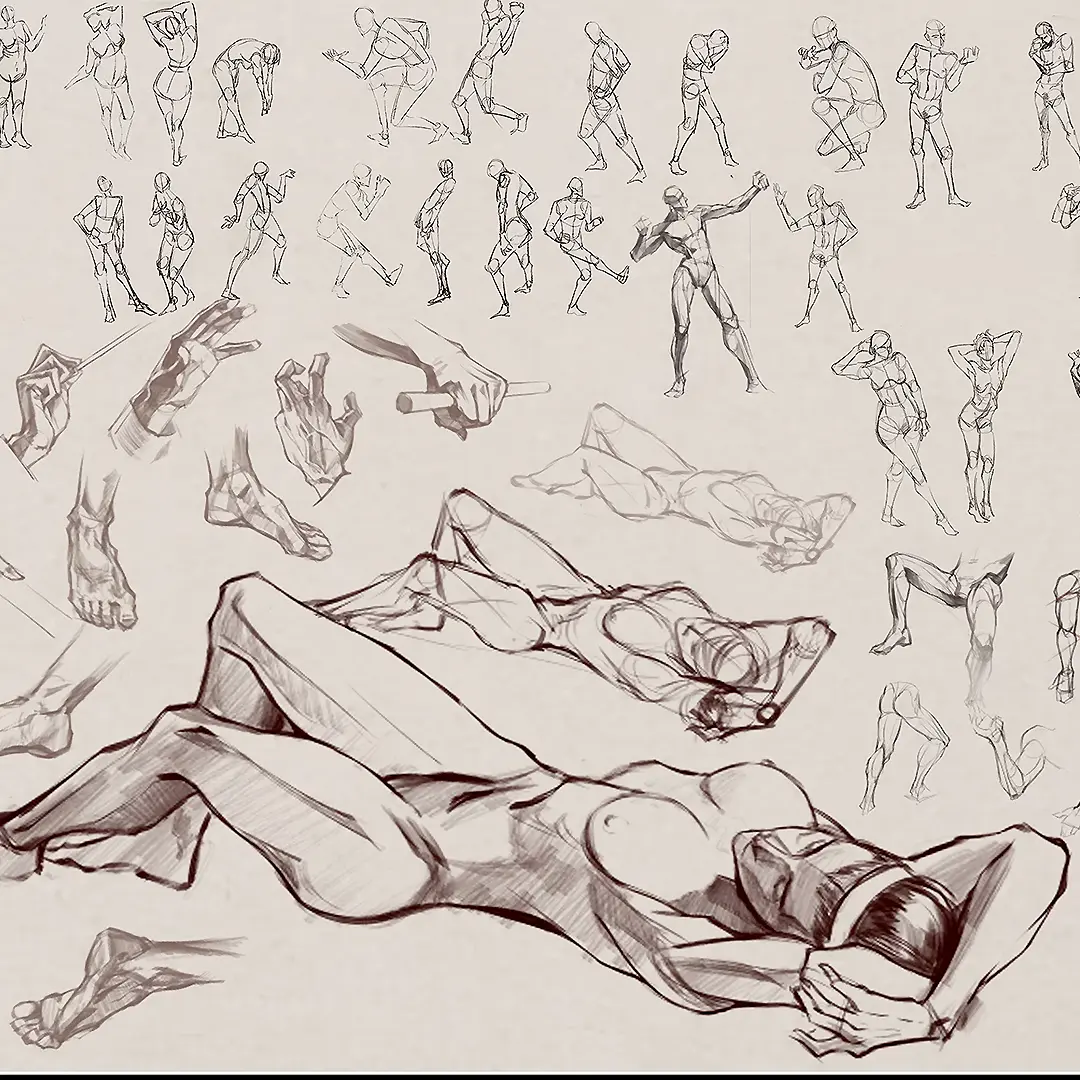Fine Art (Certificate)
Fine Art (Certificate)
The four year certificate program provides students with a disciplined approach to the study of Fine Art. Student portfolios will demonstrate the variety of skills and creativity developed. Graduates enter the field prepared for professional opportunities in Fine Art. Students take electives and art history courses to round out their experience. Unlike the BFA program, students pursuing the Certificate program do not take liberal arts coursework.
AAS AA BFA MA MFACertificate
This program is only available onsite.
Core Classes






Unit Requirements
| Major Coursework | Units |
|---|---|
| Core | 24 |
| Sophomore Portfolio | 3 |
| Senior Portfolio | 3 |
| Major | 48 |
| Art History | 6 |
| Art by Advisement | 24 |
| Elective | 12 |
| Total | 120 |
Degree Requirements
FINE ART CERTIFICATE REQUIREMENTS
- Minimum 2.0 GPA

Program Learning Outcomes
Undergraduate students will meet the following student performance criteria:
Visual Communication
- (Painting & Printmaking) Produce a consistent body of work demonstrating proficiency in a breadth of fine art disciplines
- (Sculpture) Demonstrate understanding of three-dimensional composition, crafting (technical skill) and applying underlying concept to the overall sculpted solution.
- (Painting & Printmaking) Demonstrate basic skills in composition
- (Sculpture) Demonstrate basic skills in 3D composition
- (Painting & Printmaking) Demonstrate effective use of color theory
- (Painting) Demonstrate effective use of proportion and gesture
- (Painting) Demonstrate effective use of perspective
- (Painting & Printmaking) Use value effectively when creating form
- (Painting & Printmaking) Use appropriate style and techniques to effectively execute ideas
- (Painting) Apply anatomical knowledge to accurately draw the human form
- Demonstrate craftsmanship and fine attention to detail
- (Sculpture) Develop ideas (concept) that supports the overall composition (or construction) of a sculptural form.
- (Sculpture) Devote attention to transitions and effectively solve transition problems
- (Sculpture) Present and light work in gallery-ready form, including designing effective mounting systems
Technical Execution
- (Printmaking) Demonstrate technical proficiency in the six major components of printmaking (etching, lithography, silkscreen, monotype, relief and book arts)
- (Printmaking) Demonstrate technical proficiency in editioning
- (Sculpture) Execute sculptural solutions with media-specific technical proficiency
Concept Development and Critical Analysis
- Explore and clearly articulate concepts and creative possibilities with a given topic or subject
- Analyze the strengths and weaknesses of concept and execution of a given artwork
Professional Communication
- Describe work effectively
Professional Readiness
- Produce a professional-standard portfolio of well-crafted artwork demonstrating personal vision
Academy of Art University Learning Outcomes
Graduates of the Academy of Art University will demonstrate the ability to:
- Produce a body of work suitable for seeking professional opportunities in their chosen field of art and design.
- Solve creative problems within their field of art and design, including research and synthesis of technical, aesthetic, and conceptual knowledge.
- Communicate their ideas professionally and connect with their intended audience using visual, oral, and written presentation skillsrelevant to their field.
- Execute technical, aesthetic, and conceptual decisions based on an understanding of art and design principles.
- Use professional terminology to evaluate their work and work in the field.
- Recognize the influence of major cultural and aesthetic trends, both historical and contemporary, on art and design products.
- Learn the professional skills and behaviors necessary to compete in the global marketplace for art and design
- Engage with a variety of communities beyond the classroom through internship opportunities, study abroad programs, student interest clubs, and participation in collaborative, civic, and pro bono projects.
*Semester plans are subject to change at any time. Semester breakdowns displayed are suggested and additional options are available to help customize your educational experience. Speak to an admissions or student services representative for more information. Please see our catalog for more details at: https://catalog.academyart.edu